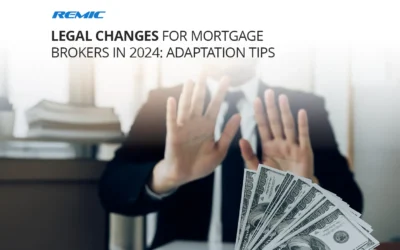5 Steps in Fraud Prevention
It is of vital interest to both the integrity of the mortgage brokerage industry and the mortgage industry as a whole that mortgage fraud be prevented whenever possible. As criminals use more sophisticated methods of committing fraud it is becoming much more difficult for mortgage agents to identify It is, however, incumbent upon mortgage agents to do everything in their power to prevent a mortgage fraud from occurring.
As a mortgage agent you should be committed to fraud prevention. Here are 5 basic steps to take when considering fraud prevention:
1. Verify the Identity
Ensure that the borrower’s identity is verified by viewing a piece of photo identification, preferably a driver’s license. Ensure that a photocopy of the document is made and kept on file for future reference.
2. Verify the Employment & Income
The mortgage agent should verify the borrower’s employment and income by contacting the employer by phone and noting this information in the file. The mortgage agent should verify the validity of the contact information of the employer by conducting a business phone number search or reverse directory lookup using www.canada411.com or other internet services. Although this task is often completed by the lender, the mortgage agent can prevent the submission of fraudulent files by discovering this information before the file is submitted.
3. Confirm the Occupancy
If the mortgage agent is aware of the applicant’s intent to rent a property that he or she is listing as owner occupied, the mortgage agent must advise the applicant that this is in fact fraudulent and that he or she will not be a party to this transaction. A mortgage may still be obtained legitimately by using a product that allows the property to be used as a rental. If the application has been submitted as an owner occupied property and the mortgage agent subsequently learns of the applicant’s intent to rent the property, he or she must advise the borrower that the application will be cancelled with the current lender and inform the lender of the misstatement.
4. Verify the Credit
The mortgage agent must verify the information found on the credit report with the applicant for consistency. If there are any discrepancies such as a different social insurance number, the mortgage agent should obtain documentary evidence that supports the applicant’s claim.
5. Check the Property
In the case of the property to be mortgaged being valued by a risk assessment tool or an AVM, and since mortgage fraud based on the property is becoming much more frequent, the mortgage agent should verify that the property does indeed exist and that it conforms to the neighbourhood by viewing the property, when possible. If this is not possible the mortgage agent should use a technology like Google Earth that provides satellite imagery of properties to verify that the property exists.
If not meeting at the applicant’s property, the mortgage agent should also ask for a copy of a recent utility bill that has the correct address of the property to be mortgaged and is in the applicant’s name. Although the risk of property fraud is borne by the lender, it is necessary for a prudent mortgage agent to protect the lender’s interests whenever possible.



